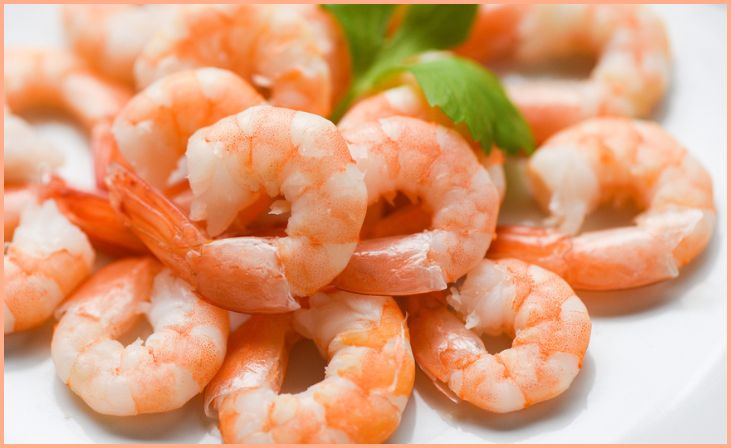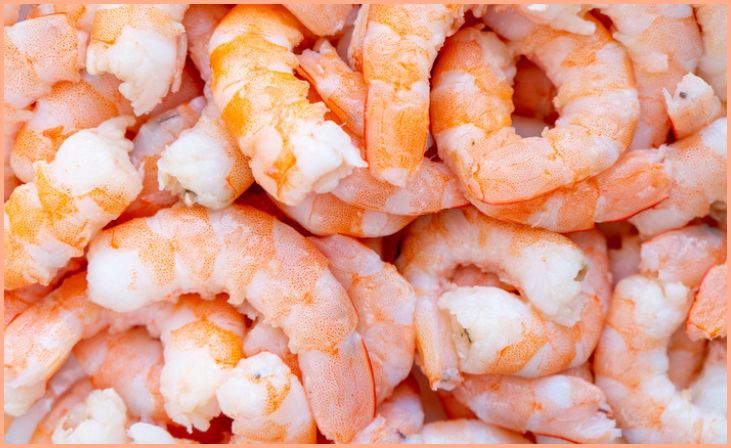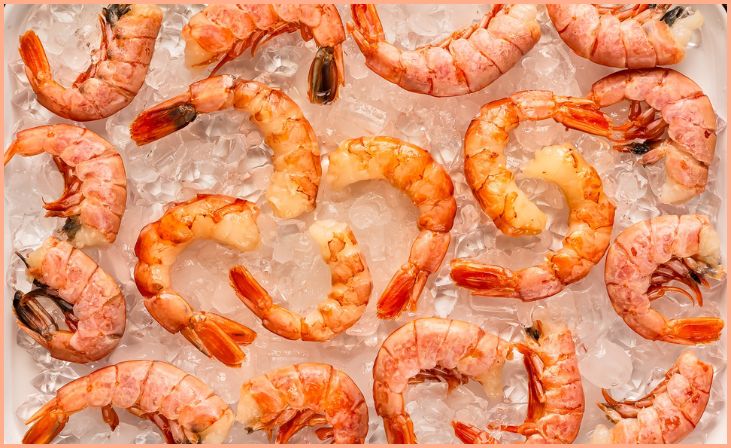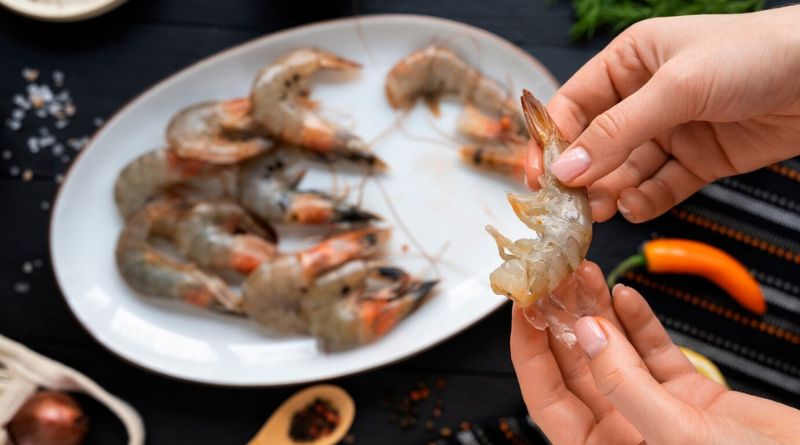How To Tell If Shrimp Is Bad – Shrimp is a delicious seafood that holds a special place in the hearts of many culinary enthusiasts. Whether it’s grilled to perfection, sautéed in flavorful sauces, or elegantly incorporated into a range of delectable dishes, there’s no denying the versatile appeal of shrimp. However, like any other food, shrimp is not immune to the passage of time, and it can go bad, potentially giving rise to health concerns.
In this comprehensive guide, we aim to provide you with the knowledge and expertise you need to distinguish the good from the bad when it comes to shrimp. Our goal is to empower you with the insights and information necessary to ensure your seafood experience is not only enjoyable but also safe for your well-being. Let’s embark on this journey of discovery, exploring the intricate nuances of shrimp quality and uncovering the telltale signs of freshness and spoilage.
Signs of Fresh Shrimp
Ensuring that your shrimp is fresh is the first and most crucial step in guaranteeing a delightful and safe culinary experience. Here, we will delve into the vital indicators that distinguish fresh, high-quality shrimp from those that have begun to deteriorate:
1. Color:

When assessing the freshness of shrimp, the color is your first and foremost clue. Fresh shrimp should exhibit a translucent appearance, often with a slightly pink or grayish hue. This transparency is a clear sign of its pristine condition. In contrast, shrimp with a dull or white coloration may signify spoilage, and it’s best to exercise caution.
Also Read:- Benefits Of Having A Watermelon
2. Smell:
Another distinctive characteristic of fresh shrimp is its aroma. Akin to the invigorating scent of the ocean breeze, fresh shrimp carries a clean, briny smell. It should remind you of the sea itself, evoking a sense of freshness and purity. However, if you detect a strong, unpleasant ammonia odor emanating from the shrimp, it’s a telltale sign of spoilage. In such cases, it’s advisable to err on the side of caution and not consume the shrimp.
3. Texture:

The texture of fresh shrimp is a crucial aspect to consider. When you gently press your fingers against the shrimp, it should feel firm and slightly springy, akin to the resilience of fresh seafood. However, if the flesh feels mushy, slimy, or overly soft to the touch, it’s a clear indicator that the shrimp has deteriorated, and it’s best to discard it promptly.
4. Shells:
The condition of the shells is another reliable clue to determine the freshness of shrimp. Fresh shrimp should have shells that are intact and firmly adhered to the shrimp’s body. Loose or cracked shells can indicate that the shrimp is no longer at its best and may even be spoiled. A shrimp with pristine shells suggests its quality and freshness.
5. Appearance:

As you inspect the shrimp, pay close attention to its overall appearance. Look for any black spots or discolorations on the shrimp’s surface. These marks can be indicative of bacterial growth and spoilage. Fresh, high-quality shrimp should appear clean and free from such blemishes, ensuring a delectable and safe seafood experience.
How To Tell If Shrimp Is Bad?
Now, let’s dive into a more detailed exploration of the telltale signs that indicate shrimp spoilage, ensuring that you can confidently discern the quality of your seafood:
1. Unpleasant Odor:

One of the most reliable indicators of spoiled shrimp is its odor. Fresh shrimp should emanate a clean, briny scent, reminiscent of the ocean’s freshness. However, if you notice a strong, offensive odor, akin to ammonia or the unpleasant smell of rotten fish, it’s a clear sign that the shrimp has gone bad. In such cases, it’s best to exercise caution and refrain from consuming it. A pungent aroma is a definitive warning that the shrimp’s quality has deteriorated.
2. Slimy Texture:
Spoiled shrimp often undergo a noticeable transformation in texture. They tend to develop a slimy or slippery consistency, making them unpleasant to the touch. When handling shrimp, if you find that the flesh feels slimy or overly soft, it’s an unequivocal signal that the shrimp has begun to deteriorate. For the sake of your health and enjoyment, it’s advisable to discard such shrimp.
3. Unusual Color:

The color of shrimp can be a strong indicator of its quality. Fresh, high-quality shrimp typically display a translucent appearance, with a delicate pink or grayish hue. However, shrimp that looks dull, white, or discolored may be a sign of spoilage. Such color variations are a clear indication that the shrimp is no longer in its optimal condition.
4. Off-Taste:
Another method to assess the quality of shrimp is through taste. By sampling a small piece of the shrimp, you can identify any off-tastes that suggest spoilage. Spoiled shrimp may exhibit a bitter, sour, or even metallic flavor, in stark contrast to the clean, oceanic taste of fresh seafood. Trust your taste buds as they can provide valuable insights into the condition of the shrimp.
5. Visible Mold:
Visual cues are also essential in determining shrimp quality. If you observe any signs of mold on the shrimp’s surface, it’s a definitive indication that spoilage has occurred. Mold is a clear visual signal of bacterial growth, and consuming shrimp with mold can pose health risks. For your safety, it’s imperative to promptly dispose of any shrimp displaying such signs.
Also Read:- Appetizers To Whip Up
6. Flaky Appearance:

When shrimp is fresh, it should be firm but still have a little give to it. However, if you find that the shrimp’s flesh appears flaky or easily falls apart, it’s best to err on the side of caution and avoid consuming it. A flaky appearance can be a sign of shrimp that is past its prime and may not be safe to eat.
Conclusion
In conclusion, being able to discern whether shrimp has gone bad is an essential skill for every seafood lover. This knowledge empowers you to make informed choices when selecting and preparing shrimp for your culinary creations. By paying diligent attention to the signs of spoilage and adhering to the guidelines provided in this article, you can ensure that your shrimp-based dishes are not only delicious but also safe for consumption.
The ability to recognize these key indicators, such as the odor, texture, color, taste, and visual appearance of shrimp, is invaluable in safeguarding your seafood experience. Freshness is the cornerstone of a delightful shrimp dish, and by upholding these principles, you can guarantee the quality of the shrimp you use in your cooking.
Remember that when it comes to seafood, particularly shrimp, the distinction between freshness and spoilage is often subtle. However, the consequences of consuming spoiled shrimp can be significant, potentially leading to health issues. Therefore, understanding how to differentiate between the two is crucial for both the enjoyment of your meal and your well-being.
FAQs
A: It’s generally not recommended to consume shrimp that has been in the fridge for a week, as seafood tends to spoil relatively quickly. It’s best to follow the freshness guidelines mentioned above.
A: To keep shrimp fresh, put it in the coldest part of your fridge in a container that won’t let air in. To get the best taste and quality, eat it within a day or two.







